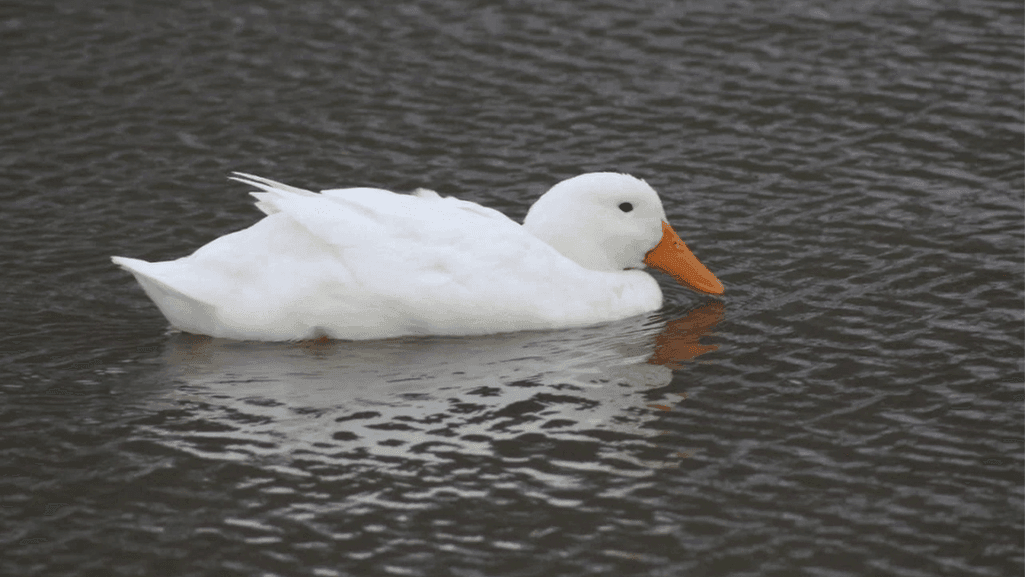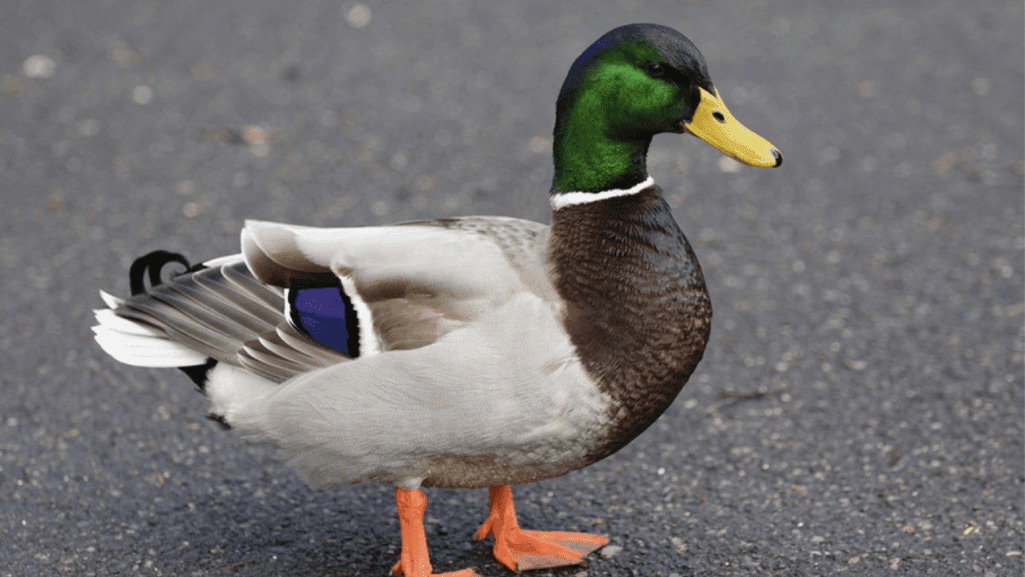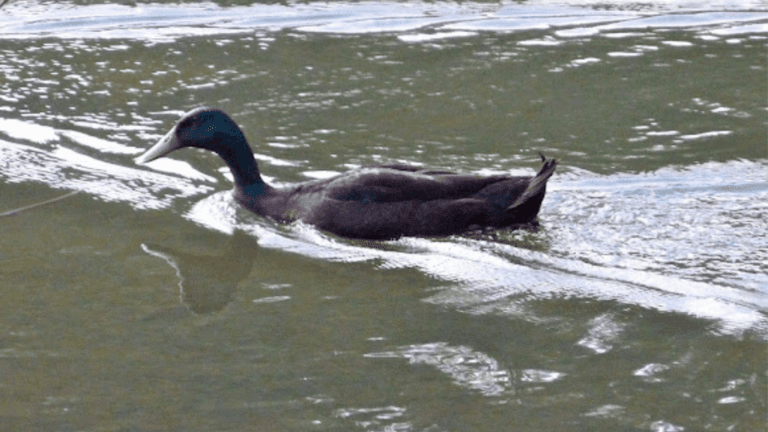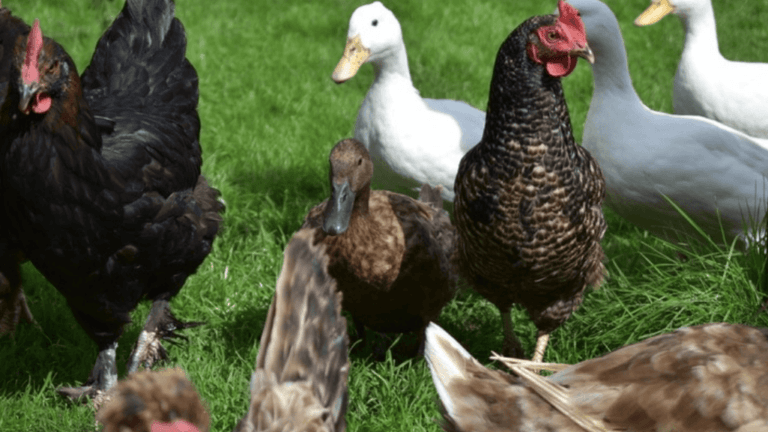Ducks are tough birds that live in many places, especially in cold areas. They face tough winters and competition for food. This can affect how long they live in the wild.
Wild ducks usually live up to 10 years, based on their type and where they live. But, ducks kept at home often live longer. They are safer from predators and get food regularly.
The survival of ducklings is key to their long life. Sadly, only about 10% of ducklings make it to breeding age. Predators, sickness, and bad weather are the main reasons for their early deaths. Yet, ducks are very adaptable and can live longer than expected.
Knowing what affects a duck’s life is important for those who love wildlife or keep ducks as pets. By looking at the differences between wild and home ducks, we can learn how to help them live longer and stay healthy.
Key Takeaways
- Wild ducks usually live 5 to 10 years, while home ducks can live up to 20 years with good care.
- Duckling survival rates vary from 10% to 70%, mainly due to predators, sickness, and weather.
- Things like losing their habitat, pollution, and food quality greatly affect a duck’s life span.
- Different duck breeds live longer, with Muscovy Ducks being the longest-living.
- Keeping a pet duck safe, feeding them well, and getting vet care can extend their life.
Average Lifespan: Wild vs. Domesticated Ducks
Ducks in the wild and those kept as pets have different lifespans. Wild ducks face many dangers in their natural homes, which can shorten their lives. Domesticated ducks, however, live longer thanks to the care from their owners.
Wild Ducks: Adapting to Challenges in Natural Habitats
Wild ducks have to deal with threats like predators and environmental changes. For example, wild Mallards live about 5-10 years, while Muscovy ducks can live up to 12 years. Habitat loss and pollution also harm their health.
Despite these dangers, wild ducks have learned to survive. They use their senses and instincts to avoid predators and find food. But, their average lifespan is still shorter than that of domesticated ducks.
Domesticated Ducks: Enjoying Longer Lives with Proper Care
Domesticated ducks, however, get to live longer thanks to their owners. They can live from 5 to 10 years, with some breeds even reaching 21 years. For instance, the oldest domesticated Mallard lived over 21 years, and Muscovy ducks can live up to 20 years.
Several things help domestic ducks live longer:
- Protection from predators through secure housing and fencing
- Access to a balanced and nutritious diet designed for waterfowl
- Regular veterinary check-ups and preventive care
- A clean living environment to minimize the risk of diseases and parasites
Interestingly, male ducks (drakes) often live longer and have fewer health issues than females. This is because females have to deal with the strain of laying eggs. By giving them the best care, duck owners can help them live a longer, healthier life.
Factors Influencing Duck Lifespan
Many things can affect how long ducks live, both in the wild and in homes. These include predators, tough environments, and health problems. Knowing about these factors helps us understand the longevity of different duck species and duck breed lifespans.
Predation: A Constant Threat to Wild Ducks
Ducks in nature always face danger from predators. The chances of ducklings surviving their first year vary a lot. For example, mallard ducklings have a 30% survival rate in their first year.
Adult ducks also face threats from bigger animals, birds, and fish. This makes their lives very challenging.
Environmental Challenges: Habitat Loss and Pollution
Loss of habitat and pollution are big problems for wild ducks. These issues make it hard for ducks to find food and places to breed. A big hailstorm in Alberta in 1953 killed about 148,000 waterfowl, showing how weather can harm ducks.
Duckling survival is positively related to the amount of seasonal emergent wetland habitat on the landscape.
Disease and Parasites: Common Health Issues in Ducks
Ducks can get sick from many diseases and parasites. This can shorten their lives a lot. Some common sicknesses include:
- Avian Influenza
- Duck Viral Enteritis (DVE)
- Duck Viral Hepatitis (DVH)
- Riemerella anatipestifer
- Avian Cholera
- Colibacillosis
Internal parasites are also a big problem for ducks. Quick treatment is key to keeping them healthy. Regular vet visits and a good diet help pet ducks live longer, up to 15-20 years.
Nutrition: The Role of Diet in Duck Health and Longevity
Nutrition is key for both wild and domestic ducks’ health and long life. A balanced diet with all the necessary nutrients is crucial. Wild ducks eat a variety of foods like plants, insects, and small fish. They live in many places, from lakes to coastal areas.
Ducks eat different plants in their natural habitats. They also eat insects and grass seeds. Their diet changes with the seasons, depending on what’s available.
Domestic ducks need a balanced diet too. They need proteins, carbs, fats, vitamins, and minerals. A good diet helps them stay healthy and live longer. It’s important for their muscles, feathers, and eggs.
Carbs give them energy, and fats help with energy storage. Minerals like calcium are important for their bones and eggshells. Foraging helps keep them active and happy.
“The nutritional needs of ducks change throughout their life stages, from ducklings to adults. It is crucial to provide a balanced diet that meets their specific requirements at each stage to ensure optimal growth, development, and overall well-being.” – Dr. M. Scott Echols, Avian Veterinarian
Domestic ducks can lay many more eggs than wild ones. This might affect their health and lifespan. It’s important to consider their diet and how it affects their egg production.
Other things like garlic and vinegar can also impact their health. Keeping them safe from arthritis and injuries is important. A good diet, clean water, and a nice home can help them live longer.
How Old Can a Duck Get: Lifespan by Species
Ducks can live different lengths of time, depending on their type and where they live. Some ducks live long in the wild, while others live longer in homes with good care. Let’s explore how long some common duck species can live.
Mallard Ducks: Resilient Survivors in the Wild
Mallard ducks are very common and widespread. In the wild, they usually live about 5 years. But, some can live up to 12 years. The oldest mallard lived an amazing 27 years and 7 months.
Drake mallards have a 70% survival rate from year one to year two. Hen mallards have a 60% survival rate. This difference is because hens work harder during breeding season.
Muscovy Ducks: The Longest-Lived Domestic Breed
Muscovy ducks are known for their unique look and calm nature. They are a favorite among duck keepers. These ducks can live up to 15 years in homes, with some living over 20 years.
Muscovy ducks live long because they are hardy and adaptable. With the right food, shelter, and vet care, they can live a long, healthy life. This shows how important it is to care for them well.
Pekin Ducks: Popular Breed with a Moderate Lifespan
Pekin ducks are popular for eggs and meat. They usually live 9-12 years, but can live up to 15 years. Jumbo Pekins, however, have a shorter life of 1-5 years because of heart problems.
To make Pekin ducks live longer, they need a good diet, clean home, and vet visits. Knowing their needs and caring for them well can help them live a happy life.
In summary, ducks’ lifespan depends on their type, where they live, and their health. While wild ducks face many challenges, domestic ducks can live longer with the right care. By understanding each duck’s needs and caring for them well, we can help them live a long, healthy life.
Life Stages of Ducks: From Duckling to Maturity
Ducks go through different life stages as they grow. Knowing these stages is key for those interested in duck breeds’ lifespans. It’s also important for ensuring ducks’ well-being at every stage of their lives.
Egg Stage: Incubation and Hatching
The egg stage is where a duck’s life starts. The embryo grows inside the egg for about 25 to 30 days. The egg needs the right temperature and humidity for healthy growth.
When the duckling is ready, it uses its egg tooth to break out of the shell. This marks the beginning of its life outside the egg.
Ducklings: The Crucial First Weeks of Life
Ducklings are born with soft down and can eat on their own soon after hatching. They eat insects, plants, and small animals. Their diet is high in protein to help them grow fast.
In their first two weeks, ducklings need a special starter feed. This feed has about 20% protein to support their rapid growth.
Ducklings need about 1 square foot of space per duckling for the first three weeks. They also need more niacin than chicks, so a supplement is necessary. As they grow, they can get too heavy for kitchen scales, showing how fast they grow.
Juveniles: Transitioning to Adulthood
At three weeks, ducklings start growing even faster. They need a lower protein feed to avoid too much protein. During this time, they can learn and adapt to new situations.
They also become more vulnerable when separated from their caretaker. They seek reassurance and safety.
Adolescent ducks go through a lot of feather growth and loss. This makes their limbs and feathers look out of proportion. By the end of the third week, they can start going outside. They need to get used to outdoor temperatures gradually.
Adults: Maturity, Reproduction, and Aging
Ducks become sexually mature between one and two years old. They are fully grown and have their adult feathers. In the wild, many factors can affect their waterfowl life expectancy and mallard life expectancy.
However, with proper care, ducks can live longer. This shows how important it is to understand what affects waterfowl longevity.
Ducks are fascinating creatures that undergo remarkable transformations throughout their lives. By understanding the unique challenges and requirements of each life stage, we can better appreciate the incredible journey of these beloved waterfowl and provide them with the care they need to thrive.
Migratory Ducks: The Impact of Migration on Lifespan
Migration is key for many duck species, especially in cold areas. Mallards, for example, migrate unless they have enough food and water all year. The spring migration for mallards typically starts in, as they head to their breeding grounds. They build nests between April and May.
The journey can be tough for wild ducks. They need to eat a lot to have energy for flying. They face bad weather, lack of food, and dangers like wind turbines and power cables. These challenges can cause exhaustion, injury, or death, affecting their aging and lifespan.
When they reach their breeding grounds, female mallards lay 8 to 13 eggs. They incubate these eggs for 27 to 28 days. The males get their breeding plumage during this time, ready to attract mates.
Mallards form new pairs every year, lasting 6–8 months. Dominant males pair up first because of their better courtship displays.
After breeding, mallards molt, making them flightless for 30–45 days. They hide in wetlands with dense vegetation during this time. Ducklings take 50 to 60 days to fledge, then prepare for fall migration when food runs out.
The average lifespan of a mallard is three years, but they can live up to twenty years in ideal conditions.
Migration is vital for many duck species but also risky. Understanding these risks helps in protecting these birds. It’s important for conservation efforts to ensure their survival in changing environments and human activities.
Maximizing Your Pet Duck’s Lifespan: Tips for Optimal Care
As a responsible pet duck parent, you want your feathered friend to live a long, healthy life. A safe environment, balanced diet, and regular vet visits are key. These steps can help your duck live longer than wild ones and even some backyard ducks.
Providing a Safe and Secure Living Environment
Creating a safe space for your pet duck is vital. Predator-proof coops and runs keep them safe from threats. Here’s how to design a great habitat for your duck:
- Use sturdy, weather-resistant materials for the coop and run
- Ensure proper ventilation and insulation to maintain a comfortable temperature
- Provide ample space for your duck to move around and engage in natural behaviors
- Include a clean water source for swimming and bathing
Ensuring a Balanced and Nutritious Diet
A well-balanced diet is key for your pet duck’s health. Ducks need a special diet that’s different from chickens. Here’s what to remember when feeding your duck:
- Offer a high-quality, commercially prepared duck feed as the primary diet
- Supplement with fresh greens, such as lettuce, spinach, and peas, for added vitamins and minerals
- Provide a source of calcium, especially for egg-laying ducks, to maintain strong bones and shells
- Avoid feeding moldy or spoiled food, as ducks are sensitive to mycotoxins
- Ensure access to clean, fresh water near their food to prevent crop impaction
Maintainer feed for ducks typically contains 13-15% protein and about 1% calcium, while layer feed contains 16-17% protein and about 3% calcium.
Regular Veterinary Check-ups and Preventive Care
Regular vet visits are crucial for your pet duck’s health. Preventive care, like vaccinations and parasite control, can help avoid health issues. Discuss these topics with your vet:
- Routine health examinations to assess your duck’s overall well-being
- Vaccinations to protect against common diseases, such as duck virus enteritis and avian influenza
- Parasite control measures, including deworming and external parasite treatments
- Beak and nail trimming, if necessary, to prevent overgrowth and discomfort
- Nutritional guidance tailored to your duck’s age, breed, and health status
By focusing on these key aspects of pet duck care, you can help your feathered companion live a longer, healthier life. You might even set a new duck age record in your household.
Conclusion
Knowing how to care for ducks is key for their well-being. The duck life cycle spans from young to old, with many factors affecting their lifespan. Wild ducks face threats like habitat loss and predators, while domestic ducks can live longer with proper care.
Diet, living space, and vet visits are vital for aging ducks. A good diet is especially important for ducklings to avoid health issues. As ducks get older, their needs change, and owners must adjust their care to meet these changes.
By understanding and meeting ducks’ needs at each stage, owners can help them live their best lives. Whether it’s watching wild ducks or enjoying domestic ones, knowing about duck lifespan helps us care for them better. This care strengthens our bond with these amazing animals.












